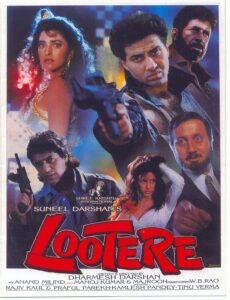
In a remarkable development within the realm of intellectual property law, the esteemed luxury automaker, Porsche, has embarked on a unique journey by seeking trademark protection for its distinct engine sound at the European Union Intellectual Property Office (EUIPO). Porsche, known for its relentless pursuit of automotive excellence, has once again set itself apart from competitors through the remarkable quality of its engine performance. This distinctiveness is evident in the engine’s rapid acceleration, which, as the car attains its desired speed, culminates in a notably subdued engine sound. This innovative endeavor transcends conventional trademark applications, encompassing not only the auditory aspect but also venturing into the realms of digital computer graphics, vehicle components, model vehicles, toy cars, and digital services. This ground-breaking move by Porsche underscores not only its commitment to automotive luxury but also its dedication to pioneering new horizons in the world of intellectual property.
Before analysing the case at hand, its necessary for us to know what exactly a Sound Trademark is ?
SOUND TRADEMARK
A sound trademark, similar to traditional trademarks, aids consumers in distinguishing one product or service from another. However, it achieves this distinction using auditory elements rather than relying on visual or textual cues. The European Union Trade Mark Implementing Regulation (EUTMIR) defines a sound mark as a collection of sounds or a single sound. Initially, only an accurate representation of the sound in musical notation was allowed for these marks. However, following the amendment of the EUTMIR in October 2017, applicants can now submit an audio file reproducing the sound. Unlike words or symbols, sounds are not commonly used in commercial contexts for identification. Sound marks are evaluated for their acceptability based on their distinctiveness, similar to words or other types of trademarks. The key criterion is whether the average consumer perceives the sound as memorable and exclusively associated with a specific business or not.
SOUNDTRADEMARK APPLICATION: PORSCHE’S ARGUMENTS

Distinctness and Uniqueness:
Porsche’s first argument centers on the fundamental principle of trademark distinctiveness. They assert that a trademark becomes distinct when it unequivocally links a product or service to a specific company, setting it apart from offerings by other firms. In Porsche’s case, they contend that their engine sound is inherently different from those of other automobile manufacturers and serves as a “unique distinguishing feature.” This unique engine sound becomes emblematic of Porsche’s engineering excellence, reinforcing the connection between their brand and superior automotive craftsmanship.
Musical Composition Analogy:
Porsche draws a compelling parallel to musical composition to bolster their case for registering the sound trademark. They assert that, much like a musical composition, their engine sound follows a structured sequence. This sequence commences with silence, gradually increasing in volume and pitch, then decreasing in volume and pitch, followed by another rise in intensity before settling into a consistent, dark sound, and ultimately concluding. This intricate sound sequence effectively encapsulates the characteristic elements of a musical composition, including dynamics, structure, and various pitches. Porsche contends that this unique arrangement transforms their engine sound into a memorable and distinctive auditory trademark.
Memorability and Effectiveness:
Porsche underscores the potential of short sounds to be highly memorable and effective in distinguishing products and services in the public’s eye. They cite renowned examples such as Beethoven’s Fifth Symphony, “Knight Rider’s” K.I.T.T. scanner sound, and the light-sabres from “Star Wars.” These brief, distinct sounds have the power to evoke instant recognition and strong associations among the public, to the extent that they are even utilized as smartphone notifications. In the automobile industry, Porsche emphasizes that specific sound sequences are a common feature in vehicle advertising, thus making it more likely for the public to remember and recognize a sound trademark as an indicator of origin. In essence, Porsche argues that concise sounds can serve as potent tools for enhancing brand recognition and differentiation.
EUIPO’S REJECTION OF THE APPLICATION
On 25 august 2023, EUIPO court rejected Porsche’s sound trademark application, in doing so it mainly analysed Article 7 of European Union Trademark Regulation which talks about the necessary conditions that are required for a product to become trademark as well as Article 42 of European Union Trademark Regulation which lays down the formal procedure for trademark application. The court while delivering its decision and held light on the following grounds:

Lack of distinctiveness
The court’s decision hinged on the principle that the distinctiveness of a trademark must be assessed from two perspectives: in relation to the goods or services it represents and from the viewpoint of the general public. In this case, the applied sound trademark depicted the sound of a vehicle’s engine accelerating and subsequently quieting down when it reaches the desired speed. The court, however, determined that this sound, as presented in the electronic file, was uncomplicated and brief, lacking the characteristics typically associated with a musical composition.
Commercial Origin and Information Conveyance:
The court maintained that while the applied trademark aimed to capture consumers’ attention, it fell short of serving as an indication of the commercial origin of the product or conveying essential commercial information about the trademark. The simplicity and brevity of the sound did not effectively communicate the source or any pertinent information, thereby undermining the primary purpose of a trademark.
Consumer Expectations and Habitual Signage:
In its judgment, the court pointed out that consumers are accustomed to recognizing companies through words or images on products. It argued that this is the prevailing norm, but in the case of a company whose sole advertisement is a brief sound, this customary approach does not apply. The court implied that the sound trademark deviated significantly from established consumer expectations and conventional branding practices.
Limited Impact on Consumers:
The court also opined that the requested sound was so basic and unremarkable that it would have minimal to no impact on the average consumer. Furthermore, it contended that most of the general public would likely pay scant attention to the sound, diminishing its effectiveness as a distinctive trademark.
Ultimately, the court’s decision rested on its assessment of the sound trademark’s inadequacy in terms of distinctiveness, conveying commercial information, and aligning with consumers’ expectations and habits, leading to the rejection of Porsche’s sound trademark application.
INSTANCES OF SOUND TRADEMARK RECOGNITION IN OTHER COUNTRIES

Although the EUIPO herein in this case rejected Porsche’s application seeking trademark protection for its distinct engine sound, there have been other instances around the world wherein sound trademark has been recognised and ultimately was granted.
MGM’S registration of Leo the Lion as a sound trademark and how is it different from EUIPO’s judgement:
In 2012, the Canada Intellectual Property Office (CIPO)) allowed the appeal of MGM’s (Metro-Goldwyn-Mayer Lion) for registration of the iconic sound of Leo the Lion as a sound trademark. At first, CIPO had denied the application, but following the intervention of the Federal Court, it revisited its decision and ultimately accepted the appeal. CIPO’s ruling was grounded in the recognition that the roaring sound of the lion represented a unique musical component. This was distinctly different from cases like Porsche, where the sound merely resembled that of an accelerating engine. CIPO emphasized that the lion’s roar held significant musical value, setting MGM apart from other production companies. Moreover, the lion’s roar was not just any sound; it was deeply ingrained in popular culture, well-known and easily identifiable among the audience. In contrast, EUIPO noted that the sound associated with Porsche was commonplace, lacking the distinctive recognition enjoyed by the lion’s roar.
LAWS RELATED TO SOUND TRADEMARK IN INDIA
The Indian Trademarks Act, 1999 does not provide a specific definition for sound trademarks yet. However, Section 2(1)(m) of the Indian Trade Marks Act, 1999 defines a “mark” to encompass various elements such as a device, brand, label, name, signature, word, letter, numeral, shape of goods, packaging, or combination of colours, among others. This definition is not exhaustive, suggesting that unconventional trademarks like smell or shape could potentially be included within its scope. But, later on it was amended and trademark rules 2017 mandates the registration of sound. Rule 26 of the rules explains the procedures of registration of sound trademark. In 2008, India granted its inaugural sound trademark registration to Yahoo Inc., an American web services provider. This distinctive sound trademark featured a human voice yodeling the word “Yahoo”.
Therefore, it is quite evident that a clear and well-defined rules surrounding sound trademarks are imperative in trademark law. This clarity serves as a compass for businesses and ensures fairness in the trademark registration process, particularly when dealing with less conventional forms of trademarks like sounds. Rather than solely concentrating on the sound’s distinctiveness, the approach should suggest that whether it has gained recognition in the market through actual usage or not. By emphasizing market recognition, one should safeguard the interests of companies with genuinely unique sound trademarks while also preventing an excessive influx of registrations for everyday sounds. The approach should strike a crucial balance in the world of trademarks. The laws should allow trademark to fulfil their primary purpose, that is to help customers to choose a product or service of a particular brand.









